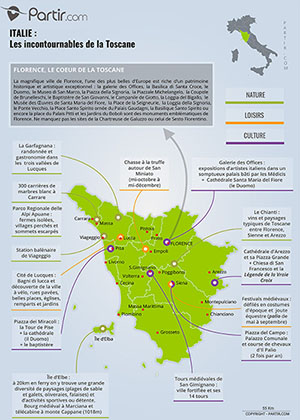The 12 best places to visit in Tuscany
Golden and green undulating hills dotted with pin straight cypress trees, olive groves and vineyards, villages and thousand-year-old abbeys perched on hilltops: this is Tuscany and its picture postcard landscapes in a nutshell. It's almost enough to forget entirely the sandy beaches along the Tyrrhenian Sea coastline, the Tuscan archipelago islands and the steep mountain reliefs which make up the Apuan Alps, famous for their immaculate marble.
Tuscany is also a myriad of medieval Republican towns, which have been claiming their political and economic independence since the twelfth century. This can be seen in its architecture, with each city having a communal palace symbolising the power of the city-state, fortifications, high towers and prestigious palaces ... Here live families of merchants and craftsmen, organised in arti (sort of guilds), which radiate throughout Europe and the Mediterranean; there are also bankers who finance the kings in Christendom, like the Medici, a family that presided over Florence's destiny for centuries. Then there are the informed patrons, like Lorenzo il Magnifico, who called upon artists, architects and scholars from all over Italy to embellish their city. The home of humanism and the Renaissance, the birthplace of the Italian language, the homeland of Dante, Petrarch, Boccaccio (the "three crowns of literature"), Tuscany - and its regional capital Florence, classified as a UNESCO World Heritage Site - is such a myriad of artistic treasures that it can sometimes make you dizzy with delight.
Here are just a few of its many riches!
Tourist attractions
Our selection of must-see places
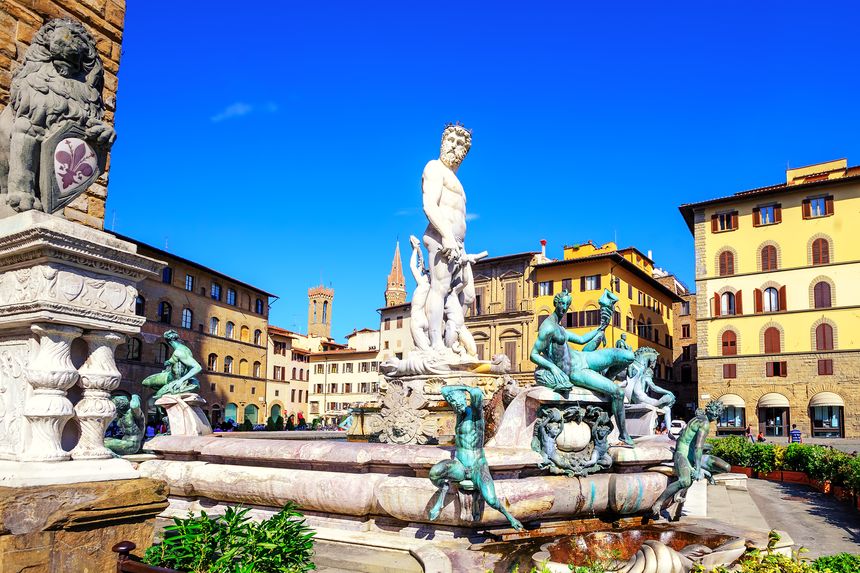

Florence
A veritable open-air museum, the Tuscany capital is the birthplace of the Renaissance: under the Medici, and notably Lorenzo the Magnificent, it experienced an artistic Golden Age. Few other cities in the world can boast such a high density of works of art per m2. On every street corner you'll find a church, palaces and awe-inspiring museums that will make your head spin. A phenomenon commonly known as Stendhal's syndrome, "the point where one encounters celestial sensations when becoming exposed to objects or phenomena of great beauty". It's no wonder that the fleur-de-lys city, a UNESCO World Heritage Site for its historic centre, attracts more than 10 million visitors a year, of which 2 million visit the Uffizi gallery! Don't think twice about veering off the beaten track; get lost in the less frequented streets, cross the river and discover Oltrarno, the left bank, fast becoming 'the' place to be in Florence, or spend some time in a coffee and discover the art of Tuscan living.
Museums | Art & Culture | Heritage | Architecture | Monument
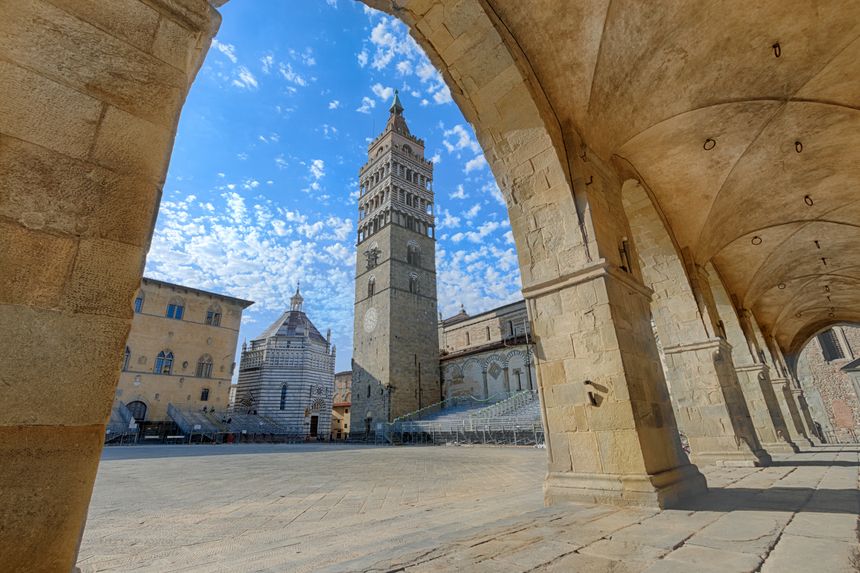

Pistoia
Like many Tuscan cities, Pistoia prides itself on having managed to preserve its historical medieval centre which is encircled by ancient city walls. Often overlooked by tourists, Pistoia still contains some real gems of places to visit, especially in the Piazza del Duomo, where you'll find the San Zeno cathedral (13th century), coated with white and green marble and its bi-colour octagonal baptistery, as well as several other Gothic palaces. Inside the Duomo, don't miss the Silver Altar of Saint James, a silversmith's masterpiece featuring more than 600 characters (1287-1456) and Saint James on the throne. Another must-see, the Sant'Andrea Roman church and its pulpit of Sant' Andrea, carved by the Italian sculptor, Giovanni Pisano.
Nice village | Monuments | Art & Culture | Architecture
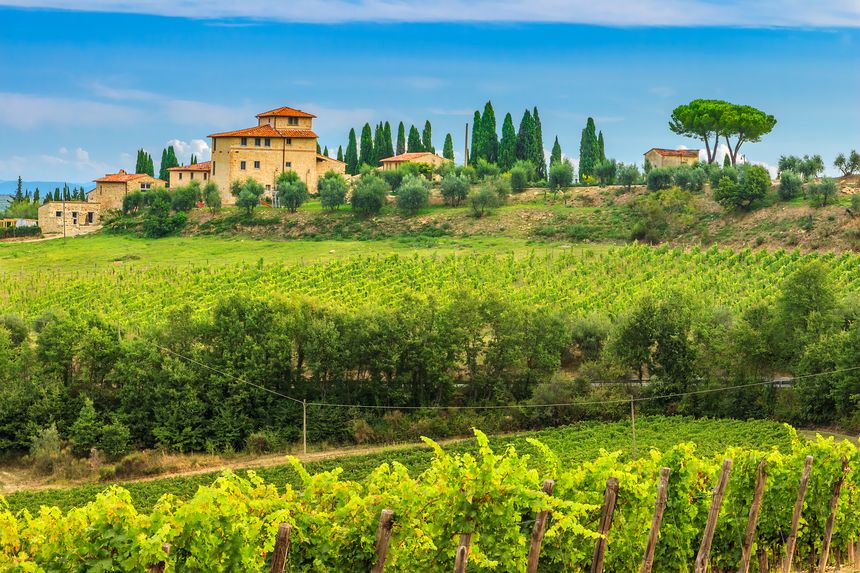

Chianti
A world-famous ruby-red wine and a region with enchanting landscapes featuring chestnut and oak forests, vineyards as far as the eye can see and the inevitable cypress trees. Welcome to Chianti, the heart of Tuscany, stretching between Florence and Siena (from north to south), and between Pisa and Arezzo (from east to west). The valley is dotted with fortified medieval villages, such as Greve in Chianti, Radda and Monteriggioni, all which bear witness to the disputes between rival cities Siena and Florence, who fought over the territory in the Middle Ages.
Vignobles | Nice village | Monuments | Architecture
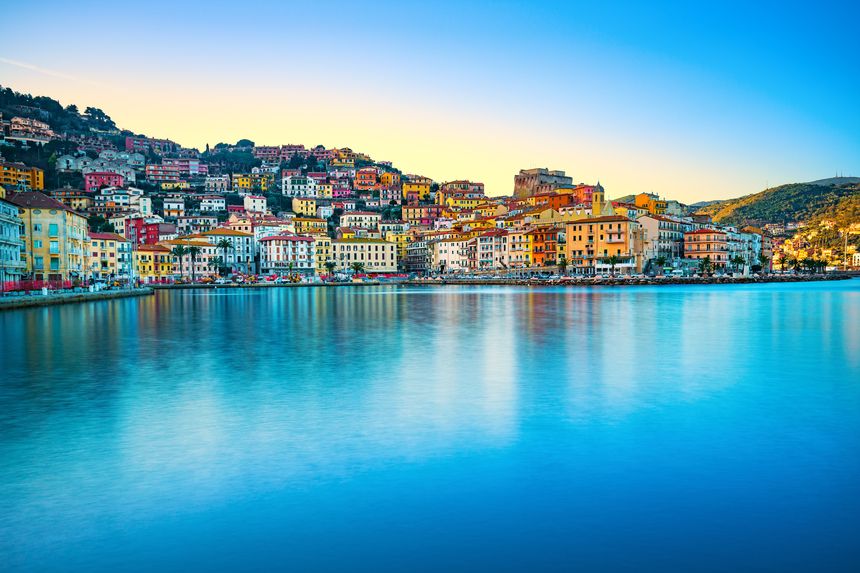

Argentario
Prior to being connected to the shore by two sandy strips (tomboli) that enclose the Ortobello lagoon, the Argentario promontory was an island! Its wild coast and sheer cliffs, which plunge into a turquoise sea, are home to tiny coves and sandy beaches, while the mountainous relief and its highest peak, the Punta Telegrafo (635 m), can be reached by hiking through the Mediterranean scrubland . Let yourself be charmed by its three towns: Orbetello, located on the partly artificial peninsula, which cuts the lagoon in two, Porto Santo Stefano, in the north, and Porto Ercole, in the east. With its colourful houses standing on the hill, Porto Santo Stefano is Argentario's most important market town; here yachts come to dock and you can embark on a trip to the island of Giglio. Porto Ercole is more picturesque with a small fishing port, while Orbetello, nestled within its walls, has an array of shops, bars and restaurants.
Off the coast, the small island of Giglio (24 km2), which sadly made the headlines due to the sinking of Costa Concordia cruise ship in its waters, has a charm all of its own, with fishermen's houses surrounding the port and a medieval village surrounded by walls. It's also much less crowded than many other islands in the Mediterranean.
Island | Nice village | Sea | Nature
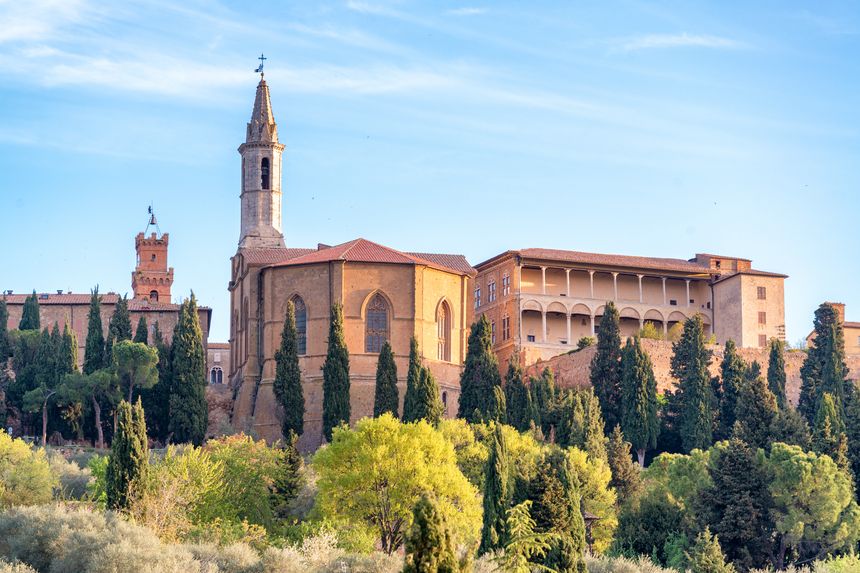

Pienza
Located 50 km northwest of Siena, the small town of Pienza is a Pope's dream! As the 1458 pontiff, under the name of Pie II, the great humanist Enea Silvio Piccolomini had just one wish: to turn his native village into an "ideal city" of the Renaissance, according to the rules of the great humanist theorist, Leon Battista Alberti. He commissioned the architect Bernardo Rossellino to do the work and, in less than four years, from 1459 to 1462, the small town of Corsignagno became Pienza. Rossellino's work focuses on Piazza Pio II, which brings together symbols of power: the cathedral, minimalist in style and modelled on German market halls; opposite, the Palazzo Comunale, seat of municipal power; to the west, the Palazzo Piccolomini, inspired by the Palazzo Rucellai in Florence and designed by Alberti and in front, the Palazzo Vescovile, where the Diocesan Museum can be found. Enjoy the latter part of the day when most tourists have left the place and the locals indulge in a traditional passeggiata (stroll) ... Browse the paths around the ramparts that offer great vistas over some of the village's monuments and splendid views of the Val d ' Orcia. Especially impressive at sunset.
Nice village | Monuments | Architecture | Monuments
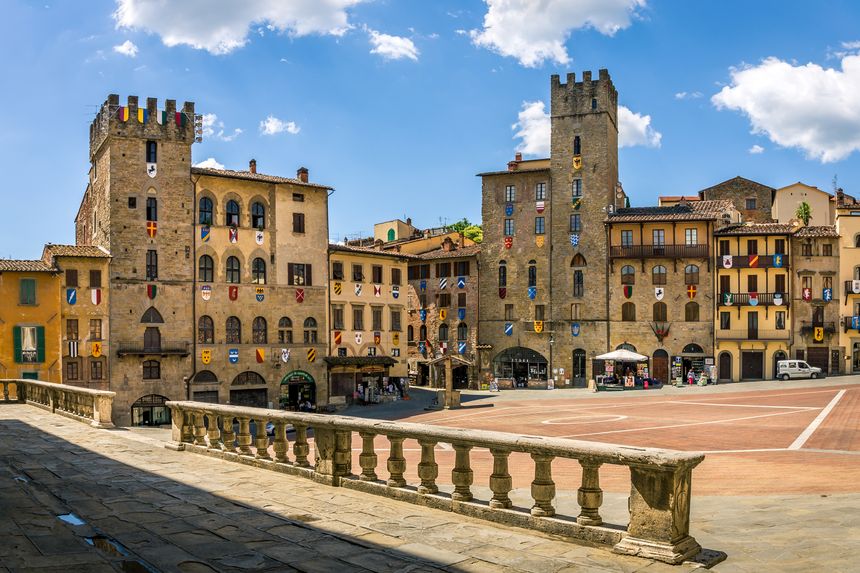

Arezzo
Even if it's only to see the Basilica di San Francesco, you simply must visit Arezzo (75 km south-east of Florence)! Behind a rather austere facade of stone and brick, faithful to the Franciscan canons, hides the wonderful frescoes by Piero della Francesca. Painted between 1453 and 1466, this Legend of the True Cross sequence features among the major works of the Italian Renaissance; after fifteen years of restoration (1985-2000) they have finally regained their initial splendour. Other architectural treasures of the city include the Santa Maria della Pieve Roman church with a very elaborate facade and an outstanding 13th century apse. Note its strange bell tower with five rows of mullioned windows. If you like antiques and flea markets, then make sure you plan your stay the first weekend of the month: 400 exhibitors come to the historic city centre..
Nice village | Architecture | Monuments | Heritage | Art & Culture
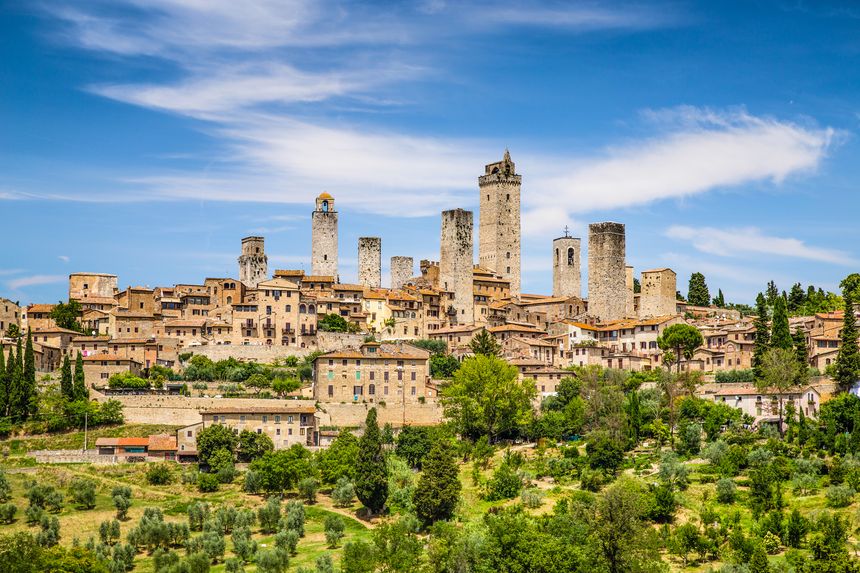

San Gimignano
Time seems to have stood still in the small medieval town of San Gimignano, surrounded by walls and spiked with towers. It has been listed, quite rightly, as a UNESCO World Heritage Site, the only flip side being that it is invaded by tourists in the summer months. You need to avoid the main roads and stroll through the medieval streets before admiring the Piazza della Cisterna, an old market square lined with palaces and tower houses, and the Piazza del Duomo, the political and religious centre of the feudal city. It's home to the Palazzo Comunale (1288-1323), which houses the Museo Civico, and is flanked by the Torre Grossa, the tallest tower in the city; next to it is the collegiate church (1056-1460), whose minimalist facade contrasts somewhat with the abundance of frescoes that can be found on the inside, and the Palazzo Vecchio del Podestà (1239-1337), to which the Torre Rognosa is attached.
Nice village | UNESCO World Heritage | Monuments | Architecture
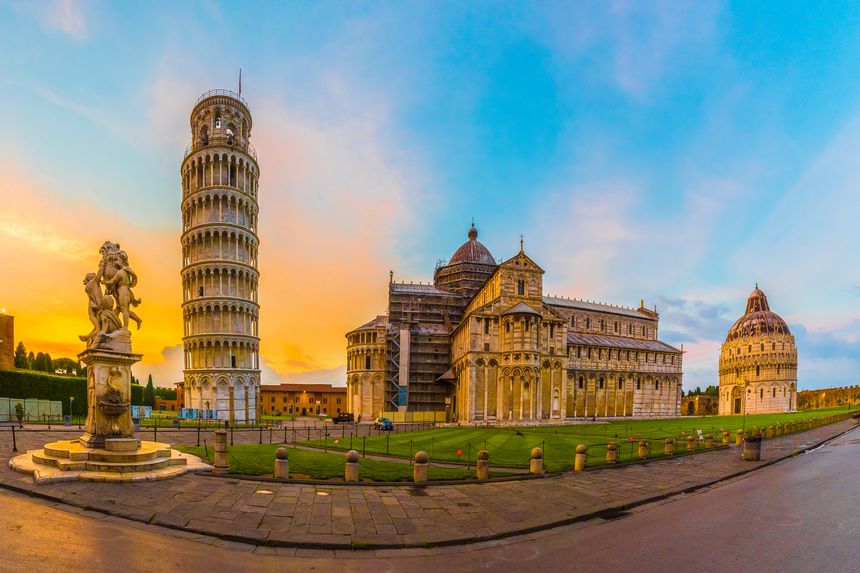

Pisa
The city is known around the world for its iconic leaning tower, with its graceful stonework, and attracts a flood of tourists every year! This tower is in fact the bell tower of a cathedral (Duomo), a masterpiece of Romanesque art, whose facade is all about lightness and elegance; don't miss the remarkable Gothic pulpit by Giovanni Pisano (1301-1311) which can be found inside, and is often compared to the work of his father Nicola. It was sculpted in 1260 for the baptistry which is located opposite the Duomo. Also worthy of mention are the cemetery galleries (Campo Santo), which are adorned with frescoes from the 14th and 15th centuries, including a touching fresco depicting the Triumph of Death. Like Florence, of which it was the subject, Pisa is watered by the Arno River. Steer clear of the Campo dei Miracoli and its treasures which is often overflowing with tourists, and instead take the time to amble along the banks of the river which is lined with charming palaces.
Monuments | Heritage | Art & Culture | Architecture
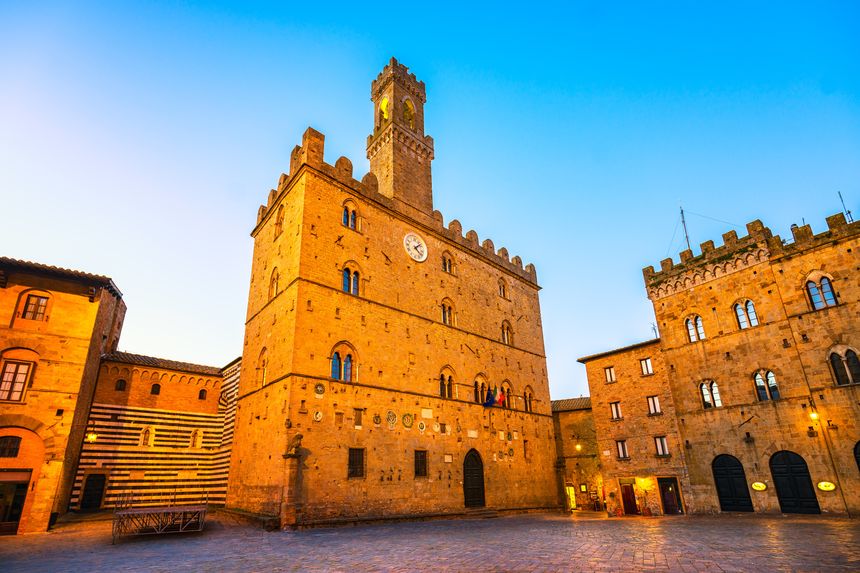

Volterra
Perched 550 meters above sea level on a high plateau of volcanic rock, the walled city of Volterra seduces everyone who visits with its medieval historic centre. In the Piazza dei Priori, the heart of the city, the Palazzo dei Priori, which inspired the Palazzo Vecchio in Florence, and the Palazzo Pretorio, which was also home to the governing bodies during the Middle Ages, face each other. But Volterra also has preserved remnants of an even more distant prestigious past, notably when it was one of the twelve cities of the Etruscan confederation: in the Guarnacci Etruscan Museum, there is a splendid collection of urns and bronzes on show.
Nice village | Monuments | Art & Culture | Architecture
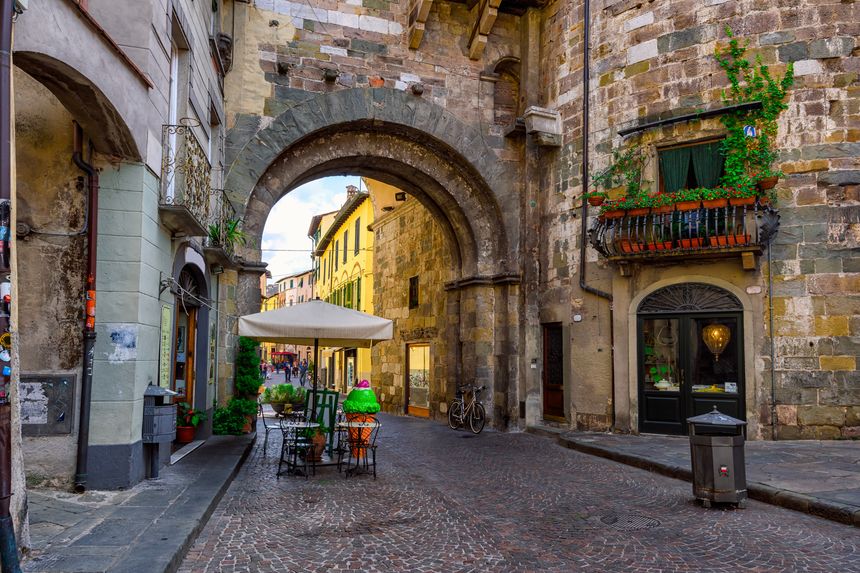

Lucca
Less than 80 km west of Florence, the small city of Lucca, surrounded by Renaissance ramparts, is a medieval gem which has been beautifully preserved. Palaces, churches and cobbled streets testify to the golden age of this city which has been specialising in the manufacture and trade of silk since the 12th century. Visit the Duomo di San Martino, whose Roman-Pisan facade is punctuated by different style columns, and don't miss the impressive Guinigi tower, crowned by a hanging garden of holm oaks. At 45 m high, the view is breathtaking.
Nice village | Art & Culture | Monuments | Architecture
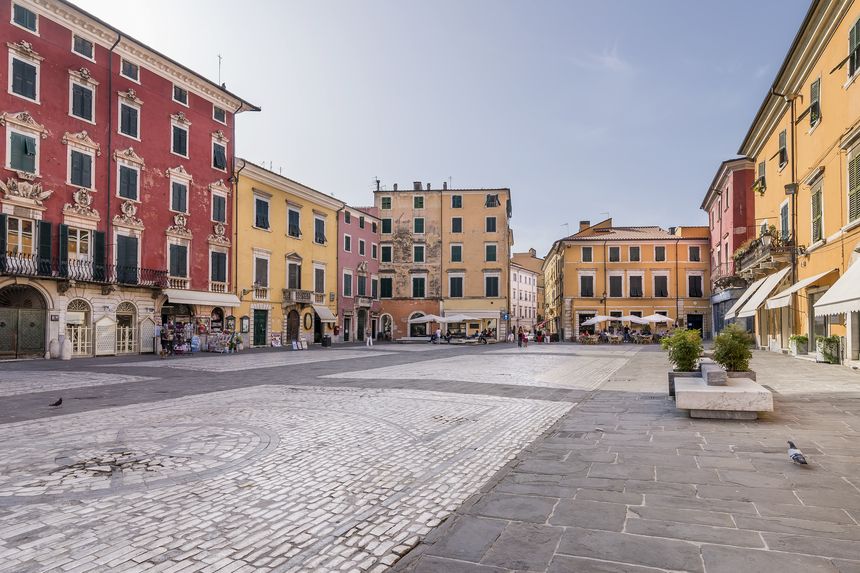

Carrara
Surrounded by mountains glittering like glaciers, Carrara is the marble capital, the white gold that has made the city famous all over the world. A stop at the Museo del Marmo is an absolute must to find out everything there is to know about the Apuan Alps marble quarries, which date back to Roman times. In the city centre, admire the sculptures on the facade of the Duomo (XI-XV.), made from real marble lace. Then head towards the quarries; just follow signs to the Cave di Marmo for access to one of the three marble fields: Torano with its lunar landscape; Fantiscritti, a spectacular marble field with high, immaculate white walls; and Colonnata, surrounded by forests.
Nice village | Museums | Heritage | Art & Culture
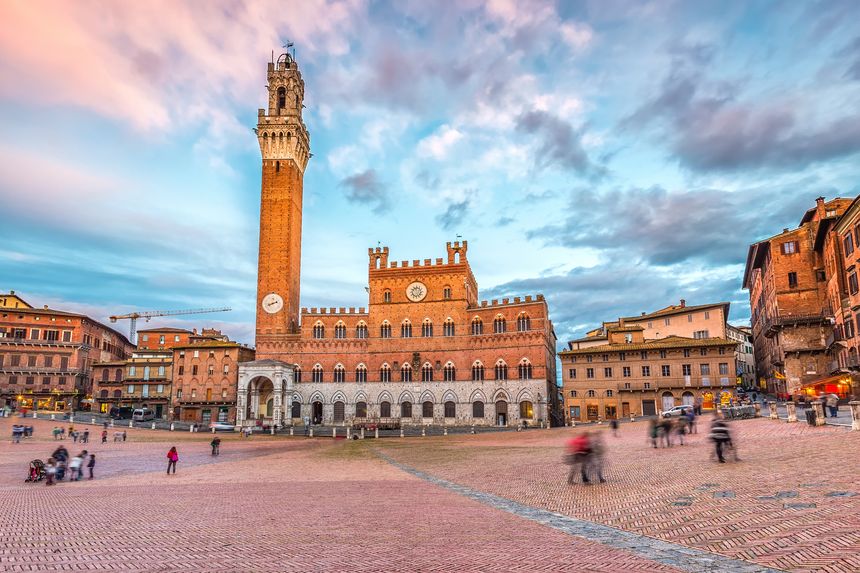

Siena
In Siena, time seems to have stood still and remained in the era of medieval tournaments, when the city, Florence's main rival, was prosperous and its artists were touring Europe. The city has managed to preserve an extraordinary unity with its brick houses and palaces, ocher tiles and alleys running down the hills to merge with the city's heart, the Piazza del Campo. It has fiercely guarded its heritage: a majestic communal palace, adorned with frescoes that depict the glorious years of the Sienese Republic, a cathedral with an ornate floor said to be the most beautiful in the world and, everywhere you look, exceptional works of art. The only down side is the sheer number of tourists that visit during the summer months, with peaks during the Palio festival on 2nd July and 16th August. But, as the Latin inscription proclaims on the Porta Camollia, "Siena opens up its heart more than its door"! How could you resist a visit?
Nice village | Museums | Heritage | Art & Culture | Shows
You may also like
-
Flights to Tuscany
All you need to know before buying your plane ticket
-
Tourist maps
Region, attractions and distance map Tuscany!
-
Hotel or vacation rental?
Find your dream accommodation in Tuscany at the best price...
-
When to go?
Be sure to visit Tuscany at the best time of year!
and why not...
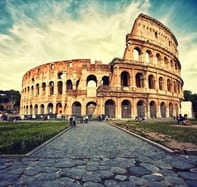 Roma and Latium
Roma and Latium


